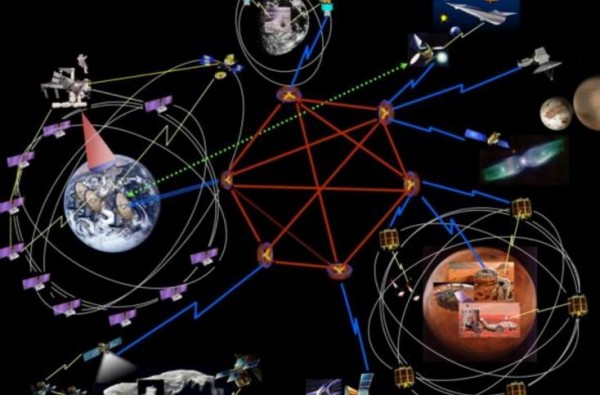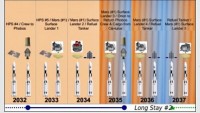NASA’s Testing a Space Internet Network for the Entire Solar System
| Arthur Dominic Villasanta | | Jun 29, 2016 10:11 AM EDT |
(Photo : NASA) Space internet: the Delay & Disruption Tolerant Networking system
NASA is currently testing a new communications protocol on the International Space Station (ISS) that will ultimately lead to a future "interplanetary internet" system connecting human outposts and spacecraft in the entire solar system.
This protocol goes by the very military sounding name of the "Delay & Disruption Tolerant Networking" or DTN. It's also called Disruption Tolerant Networking.
Like Us on Facebook
NASA described DTN as the first step towards an interplanetary internet or solar system internet system. The DTN protocol is being developed by NASA's Advanced Exploration Systems DTN project. NASA said DTN is the key internet engineering technology needed for interplanetary networking.
NASA is now testing messages sent between the ISS and ground stations using delay- and disruption-tolerant networks that temporarily store data during signal interruptions because of the constant movement of spacecraft and the planets.
When it's much improved, DTN will result in more reliable and efficient data transmission and more usable bandwidth. It's also more secure and allows many priority levels for different types of data to ensure the most important information is received first.
"DTN works by providing a reliable and automatic 'store and forward' data network that stores partial bundles of data in nodes along a communication path until the parts can be forwarded or retransmitted, then re-bundled at the final destination -- either to ground stations on Earth, robotic spacecraft in deep space, or, one day, humans living on other planets," said NASA.
"This differs from traditional Internet Protocols that require all nodes in the transmission path to be available during the same time frame for successful data transmission."
The internet protocols we currently use are spread through a series of communication points that must be clear and available for information to make it from one point to another. In space, these nodes usually aren't lined up because of movement.
NASA said DTNs are beneficial because they can improve electronic communications by storing data whenever a connection is interrupted and forwarding it to its destination with relay stations. The current technology aboard ISS has established a long-term communications test bed that sends test messages between the space station and stations on Earth.
DTN will also prove useful to earthlings in the future. Experience with DTN on the ISS is expected to lead to additional terrestrial applications, especially for mobile communications where connections are erratic and discontinuous.
DTN is a suite of experimental protocols developed by members of the Delay & Disruption Tolerant Networking Research Group operating under the Internet Research Task Force as Requests for Comment administered by the Internet Engineering Task Force.
Communications between the Earth and voyaging spacecraft face problems of delayed arrival of data and discontinued communication due to disruption of radio waves. DTN allows for a communication network that is tolerant to communication delay and disruption through development of a communication protocols to be used for space-to-earth and space-to-space communications.
TagsNASA, space internet, interplanetary internet, Delay & Disruption Tolerant Networking, DTN
©2015 Chinatopix All rights reserved. Do not reproduce without permission
EDITOR'S PICKS
-

Did the Trump administration just announce plans for a trade war with ‘hostile’ China and Russia?
-

US Senate passes Taiwan travel bill slammed by China
-

As Yan Sihong’s family grieves, here are other Chinese students who went missing abroad. Some have never been found
-

Beijing blasts Western critics who ‘smear China’ with the term sharp power
-

China Envoy Seeks to Defuse Tensions With U.S. as a Trade War Brews
-

Singapore's Deputy PM Provides Bitcoin Vote of Confidence Amid China's Blanket Bans
-

China warns investors over risks in overseas virtual currency trading
-

Chinese government most trustworthy: survey
-

Kashima Antlers On Course For Back-To-Back Titles
MOST POPULAR
LATEST NEWS
Zhou Yongkang: China's Former Security Chief Sentenced to Life in Prison

China's former Chief of the Ministry of Public Security, Zhou Yongkang, has been given a life sentence after he was found guilty of abusing his office, bribery and deliberately ... Full Article
TRENDING STORY

China Pork Prices Expected to Stabilize As The Supplies Recover

Elephone P9000 Smartphone is now on Sale on Amazon India

There's a Big Chance Cliffhangers Won't Still Be Resolved When Grey's Anatomy Season 13 Returns

Supreme Court Ruled on Samsung vs Apple Dispute for Patent Infringement

Microsoft Surface Pro 5 Rumors and Release Date: What is the Latest?













